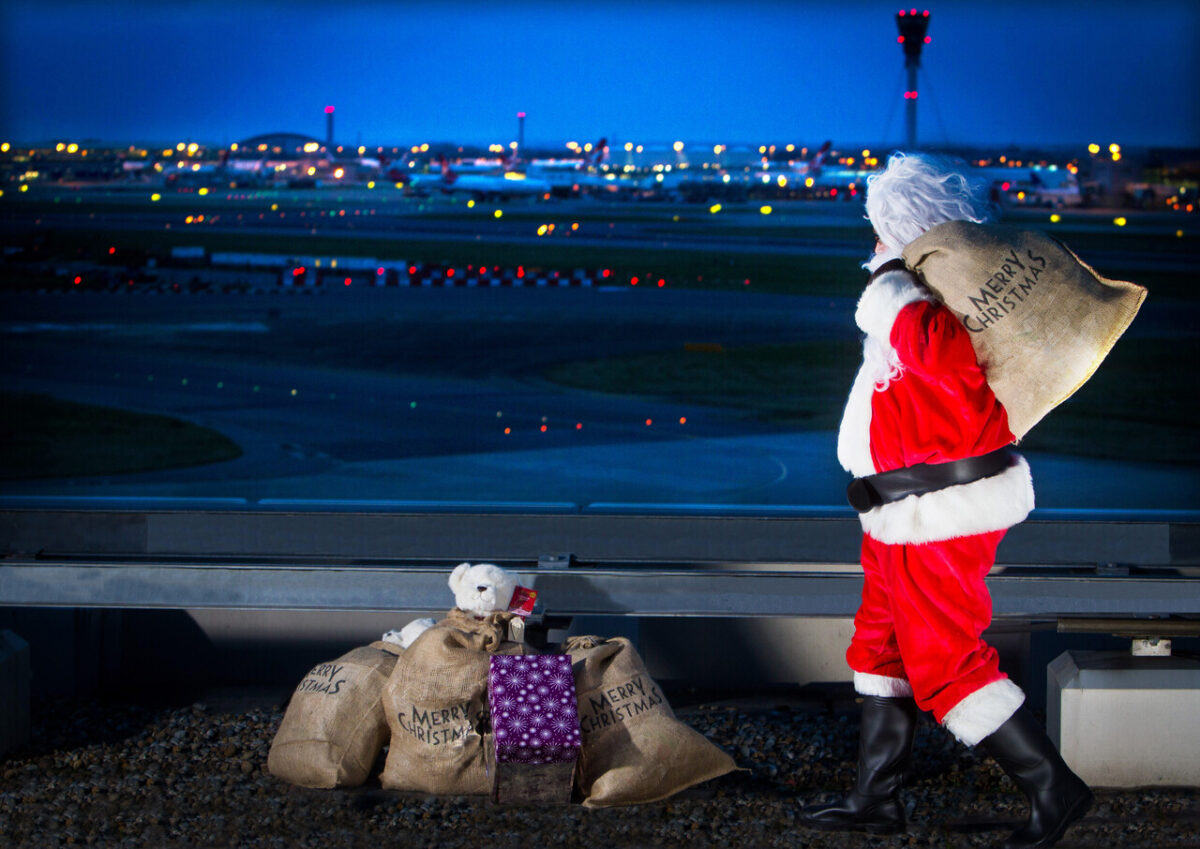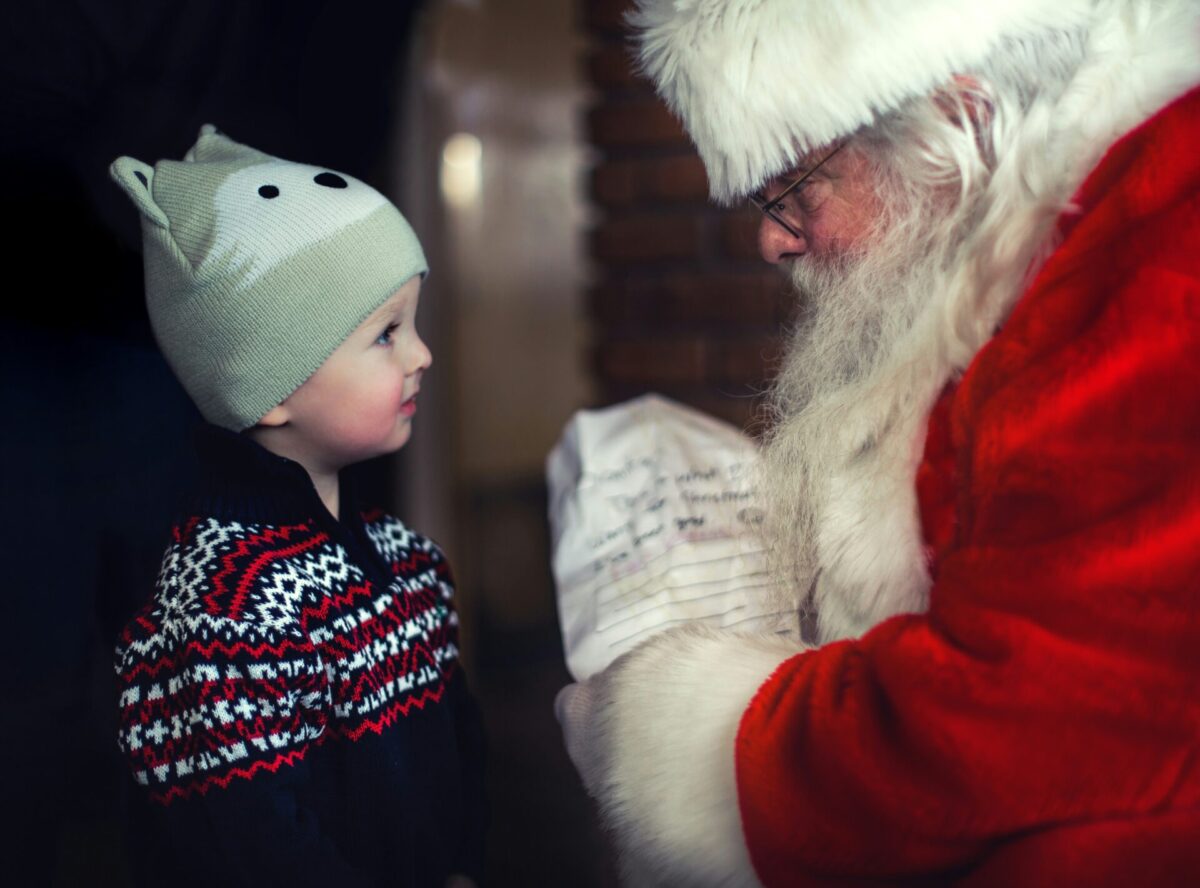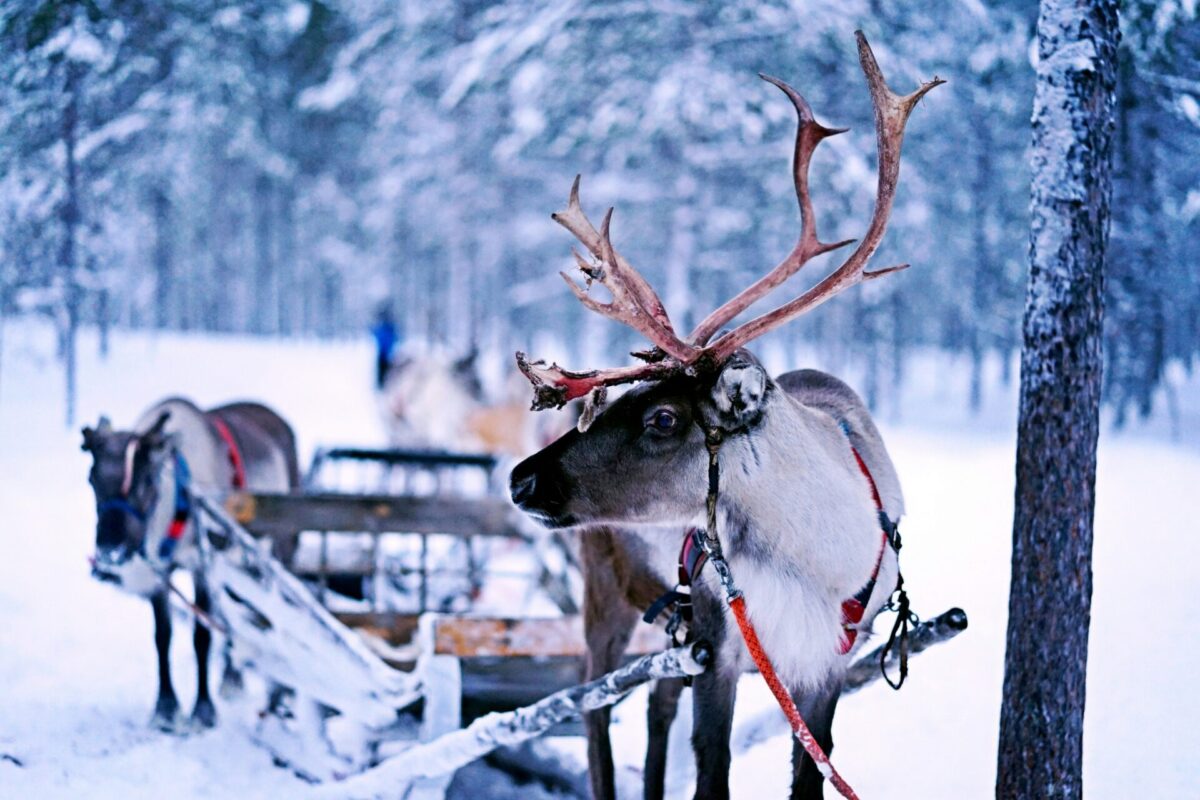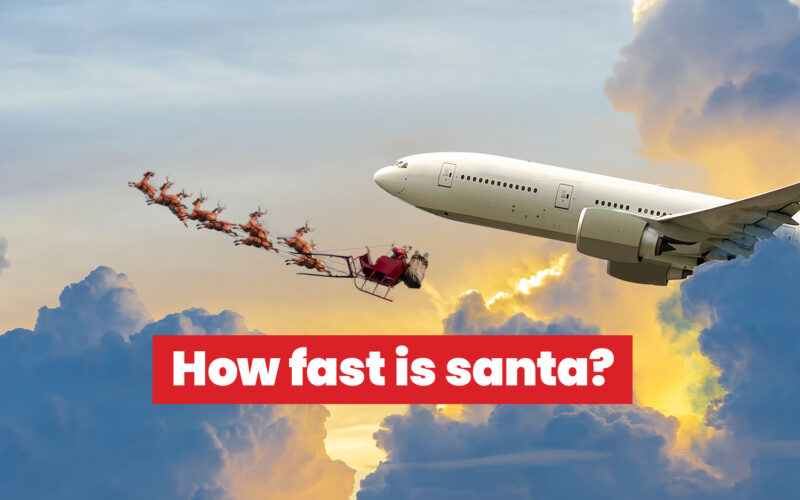Each year, Santa Claus must complete his annual task: deliver gifts to every child in the world (so long as they’re not on the naughty list). To achieve this feat in one single night, the man in red stretches the boundaries of physics. AeroTime crunched the numbers to discover how fast Santa flies to make this possible.
Applying the maths, Santa must travel at almost three million miles per hour to get around all the children before Christmas day. Here’s how we arrived at that number.
| Santa’s sleigh: Specifications | |
| Crew | 1 |
| Passengers | 1 |
| First flight | December 24, 343 AD |
| Propulsion | 9 x reindeer |
| Armament | Defensive antlers |
| Range | Infinite (with good supply of carrots) |
| Speed | 3,000,000 mph (approx) |
How fast does Santa’s sleigh fly?
Remembering physics lessons from school, we should be aware that speed equals distance over time. So, in order to establish the velocity or speed of Santa’s sleigh, we first need to know how far he travels and over what period of time.
World Population Review suggests there are approximately two billion children aged 14 and under in the world today. The 2024 World Population Data Sheet shows that the average number of children per household stands at 2.2, meaning there are some 900 million households for the fat man to visit before sunrise.

The circumference of the Earth is just over 40,000 km (24,900 miles), but poor old Father Christmas can’t just fly around the middle. He has to make multiple detours and stops on his route. Arnold Pompos of Purdue University calculated the distance Santa has to fly as being 160,000,000 km (just shy of 100 million miles), further than the distance to the Sun.
If parents successfully get their children to bed by 20:00, Santa would have around 10 hours until 06:00 to deliver the presents. But thanks to the spread of timezones around the world, he buys himself another 24 hours, giving him 34 hours in total to travel the required distance.
By dividing the distance (160 million kilometers) by the time (34 hours), we arrive at a figure of 4,705,882 km/h, which is 2,924,099 mph, or roundabout three million miles per hour. That’s 2.5 million knots in aviation terms, or Mach 3,845!
How heavy is Santa’s sleigh?
In normal flight, the weight of the goods being loaded onto an aircraft is a critical consideration. Exceeding the maximum takeoff weight (MTOW) will risk the aircraft not generating sufficient lift to get off the ground.
While we don’t know the MTOW of Santa’s sleigh, we can hazard a guess at the weight of the toys on board. This year’s top toy, tipped by iconic British retailer Hamleys, is the Crack Me Up Stitch from Disney, weighing 1.2kg. If every child asked Santa for the Stitch plush this Christmas, the payload carried would be around 2.4 billion kilograms (around 5.3 million pounds).

To put that in perspective, that’s about the same as carrying 8,425 Airbus A380s, 5,400 Boeing 747-8s, or 3.2 million Cessna 172s. That’s, of course, excluding the weight of the man himself, which we would conservatively estimate at around 90 kilograms (200 lbs).
Can anything fly as fast as Santa?
The fastest human-made object, NASA’s Parker Solar Probe, traveled at a maximum speed of 532,000 kilometers per hour when it surfed into the Sun’s outer atmosphere.
In more earthly conditions, the X-43 experimental unmanned aerial vehicle, also developed by NASA, became the fastest jet-powered aircraft on record at approximately Mach 9.6, or 10,240.84 kilometers per hour, during its last test flight.
Neither of these comes close to the speeds achieved by the man in red. Of course, should he not be protected by magic, he and his reindeer would be in dire straits. According to Engineer Linda Harden, the weight of the sleigh traveling at such high speed would create enormous air resistance, heating the reindeer like spacecraft re-entering Earth’s atmosphere.

She believes that the lead pair of reindeer would absorb around 14 quintillion joules of energy per second and would burst into flames almost instantly. In the back, Santa would be pinned to the back of his sleigh by forces 17,000 times greater than gravity.
Thankfully, Saint Nick has a few tricks up his sleeve that keep him and his reindeer team protected as they hurtle through the night. Some even say he exploits quantum mechanics to be in many places at once – another reason why no child should try and sneak up on him, as observing an object in quantum superposition could cause it to cease to exist, and that would ruin Christmas.
You can follow Santa’s route on Christmas Eve at the official NORAD Santa tracker – just make sure your eyes are tightly closed when he approaches your town.

